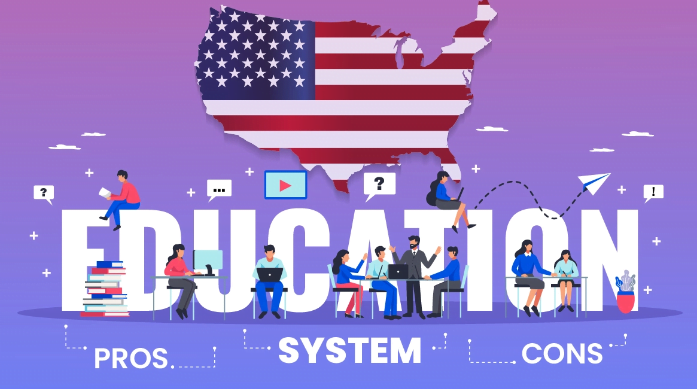The education system in the United States is a complex and multifaceted structure that plays a vital role in shaping the future of its citizens. From early childhood education to post-secondary studies, the system provides opportunities for individuals to acquire knowledge, develop skills, and pursue their dreams. In this comprehensive guide, we will delve into the intricacies of the American education system, covering its structure, curriculum, challenges, and reforms.
Structure of the US Education System
The education system in the USA is divided into three main levels: primary, secondary, and tertiary. The primary and secondary levels encompass kindergarten through 12th grade (K-12), while tertiary education includes colleges, universities, and vocational institutions.
Primary Education (Kindergarten to Grade 5)
Primary education in the USA, often referred to as elementary school, lays the foundation for a student’s academic journey. The curriculum typically includes subjects such as English language arts, mathematics, science, and social studies. Teaching methods vary but often emphasize interactive and hands-on learning experiences to engage young learners.
Standardized testing plays a significant role in assessing student progress and evaluating the effectiveness of educational programs. Common assessments include state-mandated exams and national assessments such as the National Assessment of Educational Progress (NAEP).
Read More | Unlocking Academic Excellence: Top University Programs In USA
Secondary Education (Grade 6 to Grade 12)
Secondary education in the USA comprises middle school (grades 6-8) and high school (grades 9-12). The curriculum becomes more specialized, with students taking core subjects along with elective courses based on their interests and career goals. Core subjects typically include English, mathematics, science, and history, while elective courses may cover topics such as art, music, foreign languages, and vocational education.
Graduation requirements vary by state and school district but often include completing a certain number of credits in core subjects, passing standardized tests, and fulfilling community service or internship requirements. Standardized tests such as the SAT (Scholastic Assessment Test) or ACT (American College Testing) are commonly used for college admissions.
Higher US Education System
Higher education in the USA offers a wide range of opportunities for students to pursue academic and career goals. Institutions include universities, colleges, community colleges, and vocational schools. Admission to these institutions typically requires submission of standardized test scores (SAT or ACT), high school transcripts, letters of recommendation, and personal essays.
Tuition fees for higher education can vary significantly depending on the institution and residency status of the student. Financial aid options such as scholarships, grants, and student loans are available to help offset the cost of education.
Special Education
Special education in the USA is governed by federal laws and regulations, including the Individuals with Disabilities Education Act (IDEA). This legislation ensures that students with disabilities receive appropriate educational services and supports. Individualized Education Programs (IEPs) and 504 Plans outline accommodations and modifications tailored to meet the unique needs of each student.
Support services for students with disabilities may include specialized instruction, assistive technology, and related services such as speech therapy or occupational therapy. The goal of special education is to provide students with the necessary tools and resources to succeed academically and reach their full potential.
Challenges and Reforms
Despite the many strengths of the American education system, it also faces numerous challenges and disparities. Funding disparities among school districts can result in unequal access to resources and opportunities for students. Achievement gaps based on race, ethnicity, and socioeconomic status persist, highlighting the need for targeted interventions and support services.
Educational reforms and initiatives are ongoing efforts to address these challenges and improve the quality of education for all students. Strategies may include implementing rigorous academic standards, expanding access to early childhood education, and increasing support for teachers and schools in underserved communities.
Read More | Unlocking the Power of Education: A Comprehensive Guide to Learning and Innovation
International Students in the USA
The United States is a popular destination for international students seeking higher education opportunities. Top institutions attract students from around the world, drawn by academic excellence, research opportunities, and cultural diversity. However, navigating the admissions process and visa requirements can be complex, requiring careful planning and preparation.
International students contribute to the cultural and intellectual vibrancy of campuses across the USA, enriching the academic experience for all students. While studying abroad presents unique challenges, it also offers valuable opportunities for personal growth, academic achievement, and cross-cultural exchange.
US Education System | Conclusion
The education system in the USA plays a fundamental role in shaping the future of individuals and society as a whole. By understanding its structure, curriculum, challenges, and reforms, we can work together to ensure that all students have access to high-quality education and the opportunity to succeed. As we continue to strive for excellence and equity in education, let us remain committed to fostering a lifelong love of learning and empowering future generations to reach their full potential.
